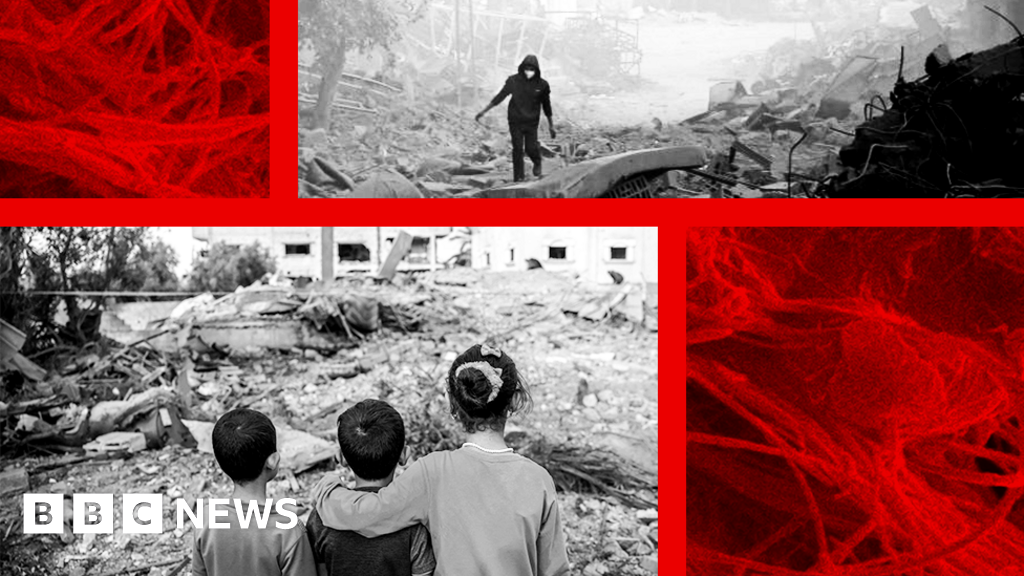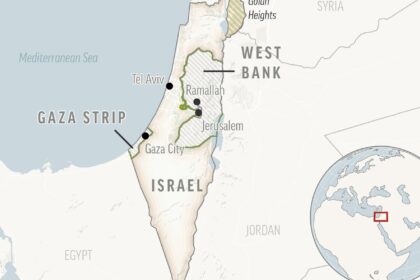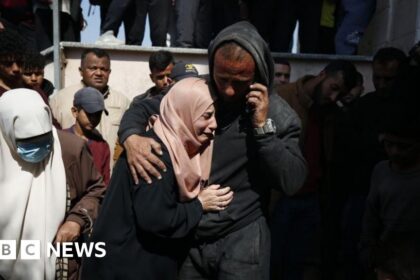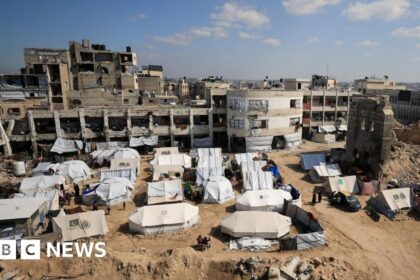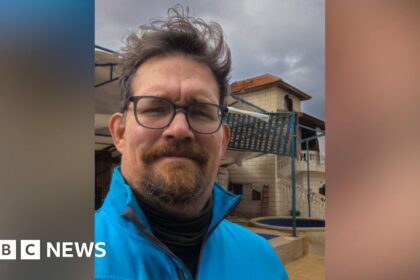**Toxic Legacy: Asbestos in Gaza’s Rubble**
The ongoing conflict in Gaza has left a devastating trail of destruction, and a silent killer lurking in the rubble poses a significant threat to the population. Asbestos, once widely used in building materials, releases toxic fibers into the air when disturbed, which can cause cancer over decades.
In Gaza, asbestos is primarily found in asbestos roofing used across the territory’s eight urban refugee camps. According to the United Nations Environment Programme (UNEP), up to 2.3 million tons of rubble across Gaza could be contaminated with asbestos. This toxic legacy will have far-reaching consequences for the people of Gaza.
**The Risks of Asbestos**
Asbestos fibers are too small to see with the human eye, making them difficult to avoid. When disturbed by something like an air strike, these fibers can be breathed in by those nearby and work their way through to the lining of the lungs. Over many years, they can cause scarring, leading to serious lung conditions such as asbestosis or mesothelioma.
Mesothelioma is a particularly aggressive form of lung cancer that is resistant to treatments. The really worrying thing about asbestos, says Professor Bill Cookson, director of the National Centre for Mesothelioma Research in London, is that it’s not dose related. Even small inhalations of asbestos fibers can cause subsequent mesothelioma.
**A Legacy That Will Last Decades**
The impact of asbestos in Gaza will be felt for decades to come. Those who contract mesothelioma do so 20 to 60 years after exposure, meaning it will take time before the possible impact across the territory is felt. A higher level or longer period of exposure can accelerate the progression of the disease.
Dr Ryan Hoy, whose research into dust inhalation was cited by the UNEP, says that asbestos fibers are really tiny particles that float in the air and can get very deep into the lungs. They are even harder to avoid because Gaza is densely populated, with approximately 2.1 million people living in a small area.
**A Warning from 9/11**
The effects of toxic dust on a civilian population were studied after the 9/11 attacks on the World Trade Center in New York. As of December 2023, 5,249 people who were registered with the US government’s World Trade Center Health Programme have died as a result of aerodigestive illness or cancer.
**The Reconstruction Challenge**
As the UN warns, the process of reconstructing Gaza will have to be managed carefully to avoid disturbing the vast amounts of asbestos-contaminated rubble. Unfortunately, the properties that made us use so much of it are the properties that make it difficult to get rid of. A UNEP spokesperson told the BBC that the debris removals process will increase the likelihood of asbestos disturbance and the release of hazardous fibers into the air.
The Israeli military launched its offensive on Gaza in response to Hamas’s attack on Israel in October 2023, which killed around 1,200 people, mostly civilians. The conflict has left more than 53,000 Palestinians in Gaza dead, mostly women and children, according to the territory’s Hamas-run health ministry.
**The Need for Caution**
As the world watches the devastation unfold in Gaza, it is essential that we acknowledge the toxic legacy of asbestos lurking in the rubble. The process of reconstruction must be managed with caution to avoid causing further harm to the people of Gaza. Only then can we hope to build a brighter future for this beleaguered population.
Read More @ www.bbc.com




